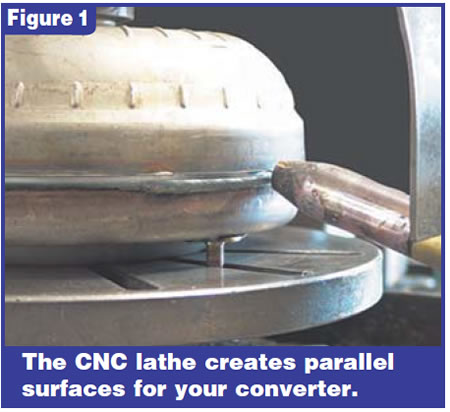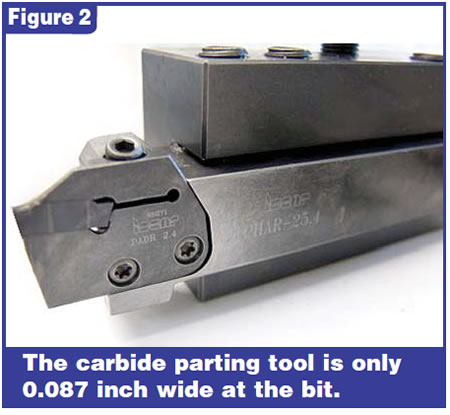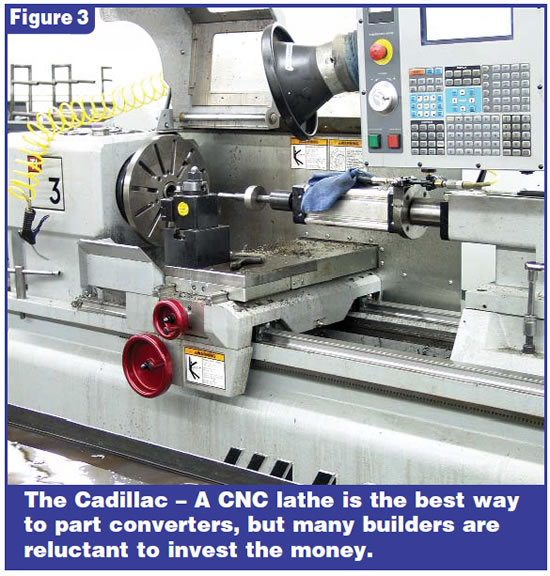
Torque Converter Tech Tips
- Author: Ed Lee
Note: This article, the second in a two-part series on proper parting procedures, takes a look at a better method.
When you’re parting a torque converter, a CNC lathe is the Cadillac of parting devices. With a CNC lathe, you can cut 50 or more converters apart in an hour and virtually eliminate the follow-up machine work – bowl build-ups, installation of renewal rings and general cleanup – that is necessary with any other conventional method for parting the same converters.

One of the factors that allows extra machine work to be eliminated is the small amount of material that is removed when the converter is cut. The bit of the parting tool on a CNC lathe is a 0.087-inch-wide carbide parting bit held by a boring bar.
This bit removes a band of material only 0.087 inch wide and leaves two perfectly parallel surfaces. Working with parallel surfaces makes it easier to reassemble the converter and ensures that the halves run true. The life span of the cutting bit is remarkable, considering its narrow width. Operators are cutting 400 to 500 converters with a single side of an insert. They claim they break more bits setting up programs than they do cutting converters.
Two factors keep shops from parting their converters on a CNC lathe: fear of the unknown and the startup cost.

The fear factor comes from a general reluctance to join the computer world and is multiplied by the fear of a computer-run piece of machinery. This fear doesn’t have much foundation. The startup program on a CNC lathe can be set up in less than an hour, and once it is set up additional converters can be added to the program in less than 15 minutes. For each new converter, only the dimensions for the diameter and depth of the cut need to be changed.
As for the startup cost, a CNC lathe will cost more than most older shop owners paid for their first homes. Luckily, the machinery will pay for itself within six months to a year. The CNC lathe will continue to pay back, not only in increased production but also in reduced tool costs and labor savings. Removing the human factor from the parting procedure is where the labor savings is most noticeable.

The run-cycle time on a CNC lathe starts when the operator presses the start button and ends when the cut has been completed and the tool has returned to the at-rest position. Run-cycle times usually average 19 to 30 seconds but do go as high as 45 to 50 seconds on large-diameter converters like Allisons and 4L80-Es.
Parting converters on a CNC lathe isn’t for everyone. However, if you would like to cut your converters more quickly, be more precise in your cutting or would just like parallel surfaces to work with, you may want to consider looking into this method.
Special thanks to Mark Mustard of Branting Industries for his technical assistance in writing this article.

Ed Lee is a Sonnax technical specialist with a focus on issues of interest to torque-converter builders. ©Sonnax 2005













